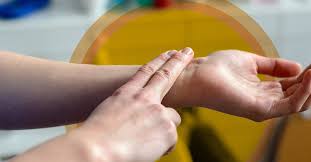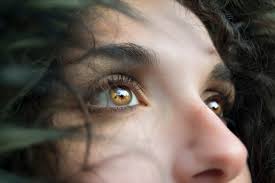obsessive-compulsive disorder (OCD) is a serious mental health condition that affects millions of people all over the world. It is characterized by unwanted and intrusive thoughts, feelings, urges, and behaviors that can interfere with one’s life. Although all forms of OCD are challenging to manage, one form in particular – Sensorimotor OCD – can be especially difficult to cope with. This blog post will provide an in-depth look at Sensorimotor OCD and how it differs from other types of OCD. We’ll explore the symptoms, causes, and treatments for this type of OCD so that you can better understand your own experiences with this disorder.
Contents
What is Sensorimotor OCD?

Obsessive-compulsive disorder (OCD) is characterized by obsessions and/or compulsions. People with OCD may have either or both of these types of symptoms. Obsessions are intrusive and unwanted thoughts, images, or impulses that occur over and over again and are difficult to control. Compulsions are repetitive behaviors or mental acts that a person feels driven to perform to reduce anxiety or prevent something bad from happening.
Sensorimotor OCD is a subtype of OCD that is characterized by obsessions related to body sensations or movement. People with sensorimotor OCD may be obsessed with the sensation of something crawling on their skin, the feeling of being dirty, or the fear of losing control of their body movements. They may engage in compulsive behaviors such as excessive washing, checking, touching, tapping, rubbing, or repeating certain actions over and over again. Sensorimotor OCD can be extremely debilitating, making it difficult for people to function in their daily lives. If you think you might have sensorimotor, consider professional help.
The Different Types of Sensorimotor OCD
There are three different types of sensorimotor OCD:
1. Pure-O: This type of sensorimotor OCD is characterized by obsessive thoughts about a specific body part or action, without any visible compulsions. For example, a person with pure-O sensorimotor OCD may obsessively think about their hands being dirty and contaminated, even though they do not have any visible hand-washing compulsions.
2. Visible Compulsions: This type of sensorimotor OCD is characterized by both obsessive thoughts and visible compulsions related to a specific body part or action. For example, a person with visible compulsions may obsessively think about their hands being dirty and contaminated, and as a result, they may wash their hands excessively or avoid touching certain objects altogether.
3. Mental Compulsions: This type of sensorimotor OCD is characterized by mental compulsions only – there are no visible compulsions associated with this type. Mental compulsions are repetitive thoughts or mental actions that a person feels compelled to perform to relieve anxiety. For example, a person with mental compulsions may obsessively think about their hands being dirty and contaminated, and as a result, they may perform mental rituals such as counting or repeating words in their head over and over again in an attempt to ease their anxiety.
With this type of sensorimotor OCD, it is important to seek professional help from a licensed mental health professional to properly treat this condition.
Signs of Sensorimotor OCD

There are a few key signs that may indicate that someone has sensorimotor OCD. Some of the signs of this type of disorder are:
Excessive need to check, double-check, or triple-check tasks or activities.
One of the most common signs of this disorder is an overwhelming need to check and double-check tasks or activities. This can include checking door locks multiple times, checking that appliances are off, or even re-reading sentences several times.
Ritualistic behavior.
Another common sign of sensorimotor OCD is the presence of ritualistic behavior. This could include compulsively counting steps, tapping objects a certain number of times, or other rituals that have no logical purpose.
Repeating movements or motions.
Repetitive motions such as rocking back and forth, tapping fingers together, or shaking hands are other common signs of sensorimotor OCD. These movements may become so compulsive that they interfere with daily activities and cause distress.
Avoidance of certain situations.
People with this disorder may also avoid certain situations due to their anxieties or fears related to their compulsions. For example, someone with sensorimotor OCD may avoid social gatherings because of their fear of not being able to complete all their rituals promptly.
Uncontrollable urge to repeat certain movements
Sometimes, people with sensorimotor OCD have an uncontrollable urge to repeat certain movements or tasks. This can be anything from tapping a specific object a certain number of times, to counting steps while walking, or even repeating words or phrases out loud.
Uncontrollable thoughts about performing certain actions over and over again.
When someone with sensorimotor OCD experiences an uncontrollable thought or urge to repeat a certain action or task over and over again, it can be difficult to control those thoughts. People may find themselves unable to concentrate on tasks due to their thoughts and the need to keep repeating their rituals.
Pros and Cons of Sensorimotor OCD
There are a variety of different types of OCD, and sensorimotor OCD is one of them. This type of OCD can be difficult to live with, as it can cause a person to constantly feel as though they are doing something wrong or that something is going to happen to them. However, there are also some positives to having this type of OCD. Here are some pros and cons of sensorimotor OCD:
PROS:
Awareness of surroundings: People with sensorimotor OCD are often very aware of their surroundings and what is happening around them. This can be a positive thing, as it can help them to avoid danger or potential accidents.
Attention to detail: People with this type of OCD tend to be very detail-oriented. This can be beneficial in many ways, such as at work or school where attention to detail is often necessary.
Good memory: People with sensorimotor OCD often have good memories. This can come in handy in many situations, such as when taking exams or trying to remember important information.
CONS:
Obsessive thoughts: People with sensorimotor OCD often experience obsessive thoughts that can be difficult to ignore or control. These thoughts can take up a lot of energy and mental space, making it hard to focus on other things.
Excessive worry: People with this type of OCD may worry excessively about situations that they think could potentially cause them harm. This can lead to increased levels of anxiety and stress which can hurt their mental health.
Time-consuming rituals: Those with sensorimotor OCD may have time-consuming rituals or compulsions that they feel the need to complete to prevent something bad from happening. This can be very draining and take away from time spent on other activities.
In conclusion, there are both pros and cons to having sensorimotor OCD. It can be a difficult condition to live with, but it also has some positive aspects that can be beneficial in certain situations.
What Causes This Type of OCD?

There are many potential causes of sensorimotor OCD, but the exact cause is not known. Some possible causes include:
Genetics
One of the most likely causes of sensorimotor OCD is a person’s genetic makeup. People who have relatives with OCD are more likely to develop the condition themselves.
Stress and Anxiety
Stressful life events, such as the death of a loved one or a major life change, can trigger OCD symptoms. Stress and anxiety can also make existing symptoms worse.
Neurological Factors
Some research suggests that there may be an imbalance in certain brain chemicals (neurotransmitters) that could contribute to OCD symptoms.
Personality
People who are perfectionists or have an obsessive-compulsive personality type may be more prone to developing OCD.
How to Treat Sensorimotor OCD?
There are many ways to treat sensorimotor OCD, but the most important thing is to seek professional help. Cognitive behavioral therapy (CBT) is the most effective treatment for OCD, and it can be very helpful for sensorimotor OCD as well. Exposure and response prevention (ERP) is a specific type of CBT that is particularly effective for treating sensorimotor OCD.
In ERP, you gradually expose yourself to the things that trigger your OCD symptoms, without engaging in the compulsive behaviors that usually accompany them. This can be a difficult process, but it can be very effective in helping you to overcome your disorder. medication can also be used to treat sensorimotor OCD, and it can be very helpful for some people.
Some other therapies that can be helpful for sensorimotor OCD include mindfulness, dialectical behavior therapy, acceptance, and commitment therapy, and hypnotherapy. It is important to find a treatment plan that works for you and to stick with it. With the right help, you can learn to manage your disorder and lead a healthy, happy life.
Conclusion
Sensorimotor OCD is a type of obsessive-compulsive disorder characterized by intrusive thoughts and fears that cause an individual to perform rituals or behaviors for fear of harm. While the condition can be debilitating, it’s important to note that there are effective treatments available. With proper diagnosis, therapy, cognitive behavioral intervention, and other coping strategies people with this form of OCD can lead fulfilling lives. If you think you may have sensorimotor OCD be sure to contact your healthcare provider as soon as possible.
For more information and guidance, please contact OCDMantra. OCD is a mental health disorder characterized by obsessions and compulsions. If you have any queries regarding OCD treatment, ERP therapy experienced therapists at OCDMantra can help: Book a trial OCD therapy session.


